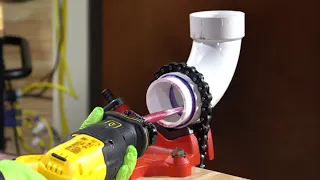Each year, as soon as families gather for massive holiday feasts, plumbing systems across the country endure their greatest test. Between large meals, additional guests, and cold weather, homeowners often find themselves battling the dreaded “Brown Friday”—that notorious day after the feast when clogged drains and overloaded toilets bring more chaos than leftover turkey.
But it doesn’t have to be that way. With some smart planning and a few simple checks, you can enjoy your holiday weekend worry-free. Below is a guide to getting your toilet (and broader plumbing) in top shape, so you don’t spend the season plunging drains or begging a plumber to squeeze you into a busy schedule.
Why Is “Brown Friday” a Thing?
Day after day, your toilet handles routine loads just fine. Then, on a major holiday, guests arrive, the kitchen buzzes with heavy cooking, and the household shifts into high gear. With extra people in the home, the toilet endures more flushes—and often more bulky waste like napkins or greasy scraps that should never go down.
Meanwhile, the kitchen disposal might be jammed full of bones, potato peels, or fats. If that disposal line connects anywhere near your toilet’s main line, it all merges into a single system. Combine the strain from multiple bathrooms with possible grease blockages, and the pipes can become severely overloaded—leading to backups, slow drains, or that dreaded rising water in the toilet bowl.
Basic Toilet Maintenance: First Steps
Before guests show up, or before you awaken to an unexpected backup on a holiday morning, take these precautionary measures. Most of them require minimal time and tools, but they can save you major headaches.
1. Inspect the Flapper
Inside your toilet’s tank is a rubber (or silicone) flapper that lifts each time you flush. Over time, the flapper can warp, crack, or develop a misshapen edge, causing the toilet to run or occasionally fail to seal. Not only does this waste water, but it can also lead to an incomplete flush if the flapper doesn’t open or close correctly.
-
Check for Damage: Lift the tank lid. Observe whether the flapper’s edges lie flat against the valve seat. If you see noticeable wear, ridges, or cracks, it’s time for a replacement.
-
Adjust the Chain: Make sure the chain is neither too tight nor too slack. If it’s overly taut, the flapper never seals fully; if it’s too loose, you might have to hold the handle down to get a complete flush.
-
Replace If Needed: A universal flapper typically costs a few dollars at a hardware store. Install it carefully, verifying it aligns with the overflow tube and hinge points.
2. Tighten the Toilet Seat and Tank Bolts
A toilet that shifts or rocks can break its wax seal or cause an annoying squeak when in use. It can also spook guests who feel the seat moving unpredictably.
-
Seat Check: Lift the seat, locate the plastic caps covering the bolts, and see if they’re loose. A simple screwdriver turn or a small wrench can secure them.
-
Tank Stability: If the tank wobbles, the bolts at its base may need tightening. However, avoid over-tightening or you risk cracking the porcelain. Aim for firm, not forced.
3. Confirm Quick, Consistent Flushing
Does water swirl in the bowl properly, or does it swirl halfway and then trickle out? A partial flush can be a clue that the jets under the bowl’s rim are clogged with mineral buildup. If so, gently use a small mirror or a stiff brush to clear them.
-
Test the Full Cycle: Wait for the tank to fill, then flush. Watch if the bowl empties instantly. If it’s sluggish, the drain might be partially blocked.
-
Listen for Hissing: A constant hissing noise from the tank means water seeps through flapper or fill valve issues. Address these so it doesn’t become a bigger problem the day guests arrive.
Household-Wide Checks
A healthy toilet is fantastic, but if your home’s main line has a problem, backups can occur no matter how pristine the fixture. Take a few moments to evaluate other key spots in your system, especially if you plan to host a large group.
1. Main Sewer Cleanout
Do you know where your cleanout is located? This is usually a capped pipe accessible somewhere outside or in a crawl space. If your sewer line clogs, having a cleanout helps a plumber quickly snake or hydro-jet the line.
-
Check for Visibility: Ensure landscaping or debris hasn’t hidden the cleanout. If guests or family stay for multiple days, it’s wise to keep that area clear in case of an emergency.
-
Look for Slow Drains: If multiple sinks or tubs are draining slowly, there may already be partial blockage in the main. Consider scheduling a professional drain cleaning before the holiday hits full swing.
2. Garbage Disposal
Large meals produce extra scraps. Turkey bones, fibrous vegetables, or grease might tempt someone to grind them up. Yet, a disposal can jam or slow if misused.
-
Run Cold Water: Use cold water while the disposal operates, ensuring fat solidifies enough to be ground up (rather than liquefying and coating the pipes).
-
Avoid Problem Items: Fibrous peels, large bones, or coffee grounds can accumulate. Let guests know to toss scraps in the trash or compost bin if possible.
3. Water Heater
It’s not directly about the toilet, but hot water supply is crucial if you have a houseful of visitors. If the water heater runs poorly, or if the temperature is set too low, guests might linger, searching for the handle, or flush the toilet repeatedly hoping it refills with hot water lines.
-
Check Temperature: If it’s too hot, scalding becomes a concern for guests. Keep it around 120°F for safety and efficiency.
-
Flush Sediment: An annual flush helps remove mineral buildup. This process prolongs heater life and ensures consistent hot water output.
Strategies for Hosting Large Gatherings
Once your toilet and main lines are ready, you can focus on practical guidelines for guests. Rather than micro-managing every flush, provide subtle reminders or small conveniences:
-
Plungers in Each Bathroom: A discreet plunger near the toilet helps visitors who face a minor clog handle it quietly. No one wants to ask the host for a plunger in the middle of a family dinner.
-
Trash Bins in Every Restroom: Offer small wastebaskets so guests discard tissues or sanitary items responsibly. This single step can prevent backups from ill-advised flushes.
-
Sign or Reminder: A polite note above the toilet may remind everyone not to flush wipes or other non-flushable items. Something friendly like, “Please be gentle on our plumbing—only toilet paper goes down.”
What If a Backup Happens Anyway?
Despite careful preparation, a sudden wave of flushes and large meals can still push drains to their limit. If you’re unlucky enough to deal with a clog on a holiday weekend, here’s what to do:
1. Stay Calm and Start Simple
Reach for the plunger. Position it firmly over the bowl’s drain opening, ensuring a tight seal. A few strong plunges might dislodge the blockage. Often, the culprit is a wad of paper or a foreign object lodged near the trap.
2. Check the Cleanout
If all the house’s toilets or drains show signs of backing up, it’s likely a main line clog. Go to the cleanout outside. If water or waste is overflowing there, you’ll need a drain snake or professional to clear the blockage.
3. Turn Off the Water if It Overflows
If the toilet threatens to overflow, quickly turn off the supply valve located behind the fixture. This prevents more water from entering the bowl. Mopping up is far easier than letting it flood.
4. Call a Professional If Needed
When simple plunging or an auger doesn’t work, or if raw sewage is coming up from other drains, it’s time to contact a plumber. The best tactic is to schedule them early if you suspect an issue—some plumbers can fit in pre-holiday checkups but might be slammed on actual “Brown Friday.”
Why Professional Maintenance Matters
In the same way you might tune up your car before a road trip, a plumber can do a comprehensive inspection before the holidays. They’ll look for:
-
Small Leaks: Even a minor drip from a worn-out flapper or fill valve can escalate under heavy usage.
-
Hidden Weak Spots: Rotted or corroded pipes might handle normal flow but fail under the stress of multiple showers and repeated toilet flushes.
-
Efficiency Upgrades: Low-flow toilets or modern fill valves help reduce the load on your system.
Extra Tips for Surviving Brown Friday
-
Space Out Showers and Laundry: Doing laundry at the same time multiple people shower can strain the hot water and the drains. If possible, stagger these tasks.
-
Use the Right Toilet Paper: Some brands labeled “septic safe” degrade more quickly, placing less burden on your lines.
-
Limit Large Gatherings to One Room: If your house has multiple bathrooms, gently guide guests to spread out usage. This distributes flushes across lines, giving each one time to drain.
Summary: A Few Simple Steps Go a Long Way
It doesn’t take heroic measures to ensure your toilet can handle a big holiday or weekend event. Flapper replacements, a quick seat or tank bolt tightening, and verifying the drain lines are clear can drastically reduce your odds of a messy meltdown. Providing plungers and trash bins helps, too—no one wants to come find you mid-meal to fix an embarrassing clog.
And if you suspect deeper issues—like a partially blocked main line or a worn-out fixture—consider scheduling a pre-holiday checkup. After all, addressing a small fix early is infinitely easier (and cheaper) than dealing with an emergency call after your houseful of guests has arrived.
With these considerations in mind, you’ll be prepared for whatever “Brown Friday” can throw at you. Instead of rummaging for a plunger or scanning the phone book for a plumber who isn’t booked solid, you can sit back, relax, and enjoy your holiday with peace of mind—knowing your bathroom is ready for the extra load. After all, having family over should be about good food and good company, not dealing with messy backups.




